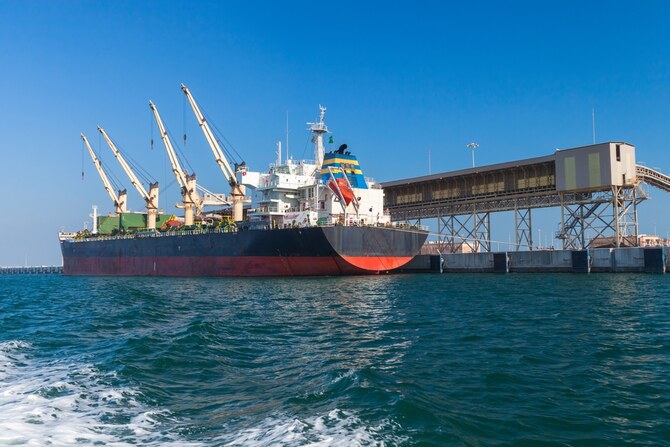RIYADH: The Kingdom’s efforts to diversify its economy away from reliance on oil are evident in the 12.7 percent year-over-year increase in non-oil exports in October, which reached SR25.38 billion ($6.76 billion).
According to the General Authority for Statistics, Chemical items comprised the largest portion of the non-oil export categories (26.7%), followed by plastics and rubber products (23.7%).
A key component of Saudi Arabia’s larger Vision 2030 goal, which seeks to change the Kingdom’s economic structure and lessen dependency on oil earnings, is the growth in non-oil exports.
From 30.1 percent in October 2023 to 35.2 percent in October 2024, the ratio of non-oil exports (including re-exports) to imports rose. According to GASTAT’s report, this resulted from a 3.8 percent drop in imports and a 12.7 percent growth in non-oil exports during that time.
In October, total merchandise exports decreased 10.7 percent, mostly due to a 17.3 percent decline in oil exports, while non-oil trade increased. Oil’s percentage of total exports fell from 78.3 per cent to 72.6 per cent in the previous year, demonstrating the Kingdom’s continued efforts to lessen its reliance on crude sales.
Saudi Arabia voluntarily reduced its oil output by 500,000 barrels per day to calm international markets in April 2023. This reduction will last until December 2024. China continued to be Saudi Arabia’s biggest trading partner, bringing in SR14.95 billion worth of goods in October, or 16.1% of the Kingdom’s total exports. South Korea (SR8.31 billion), Japan (SR8.70 billion), and India (SR8.79 billion) were other essential destinations.
Also Read:
The United Arab Emirates Ships 3,000 tons of Supplies to Lebanon
Food Help is Provided by KSrelief in Yemen and Syria



































